Undergrowth, 2022 |
|---|
Porcelain, stoneware, earthenware, rubble, bitumen, earth, leaves / Variable dimensions |
|---|
Tignous Center for Contemporary Art, Montreuil, invited by Julie Sicault Maillé. Undergrowth is an installation of glazed ceramics, representing both natural elements and abandoned garbage. Mushrooms, blades of grass, weeds, plastic bags, shoes, cardboard plates, Post-It notes, cotton buds, confetti - insignificant objects that have become fragile and precious - rest on rubble taken from the city. The whole, halfway between realism and enchantment, represents an urban sample on the edge of an undergrowth. |
|---|
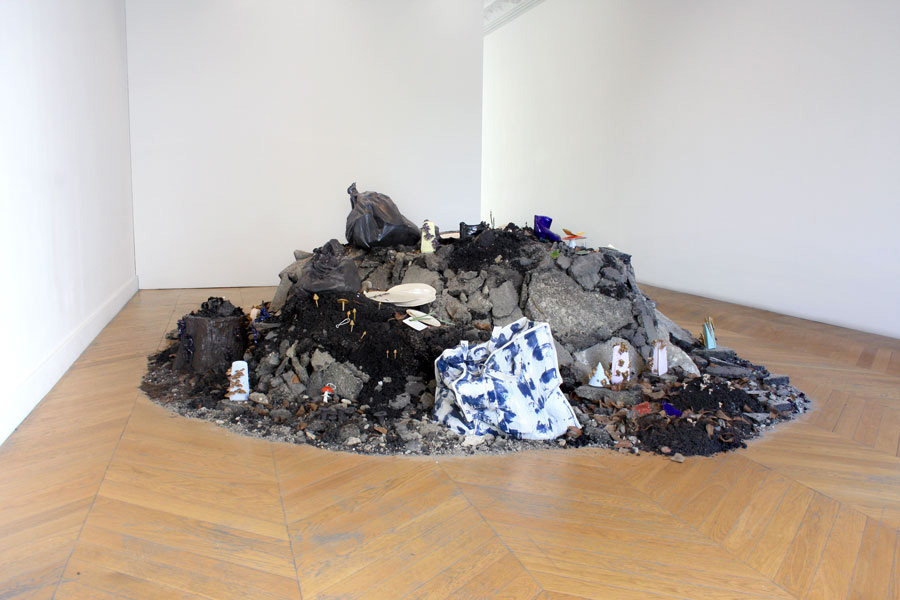
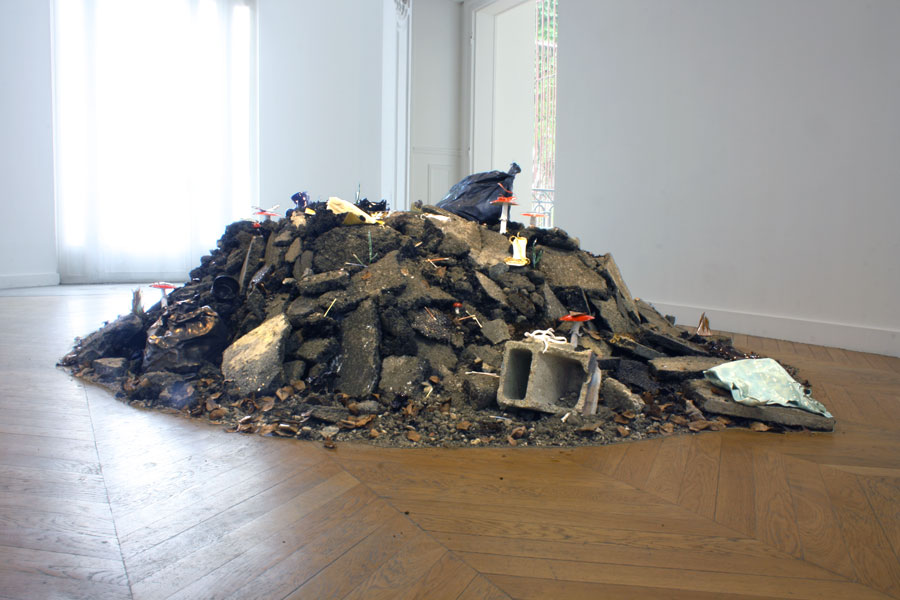

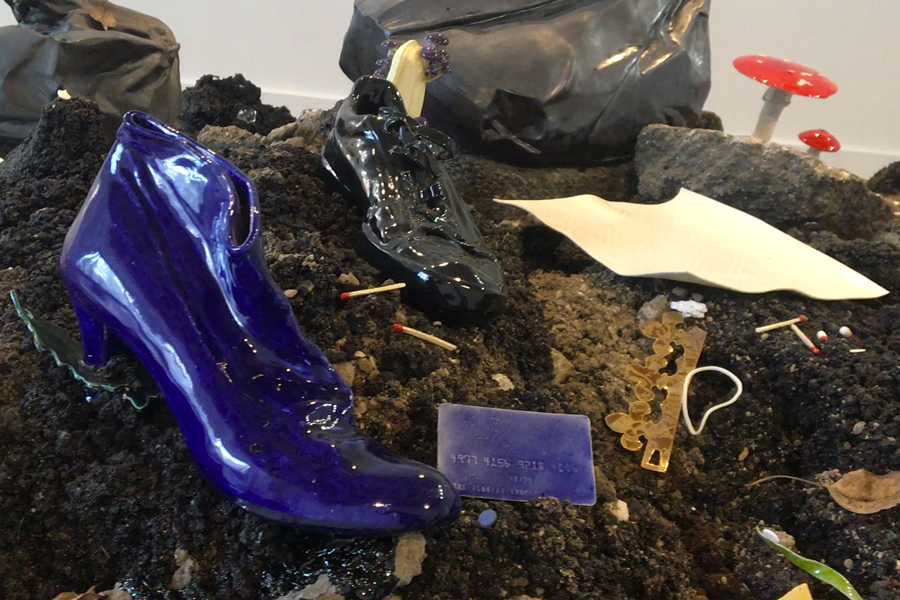
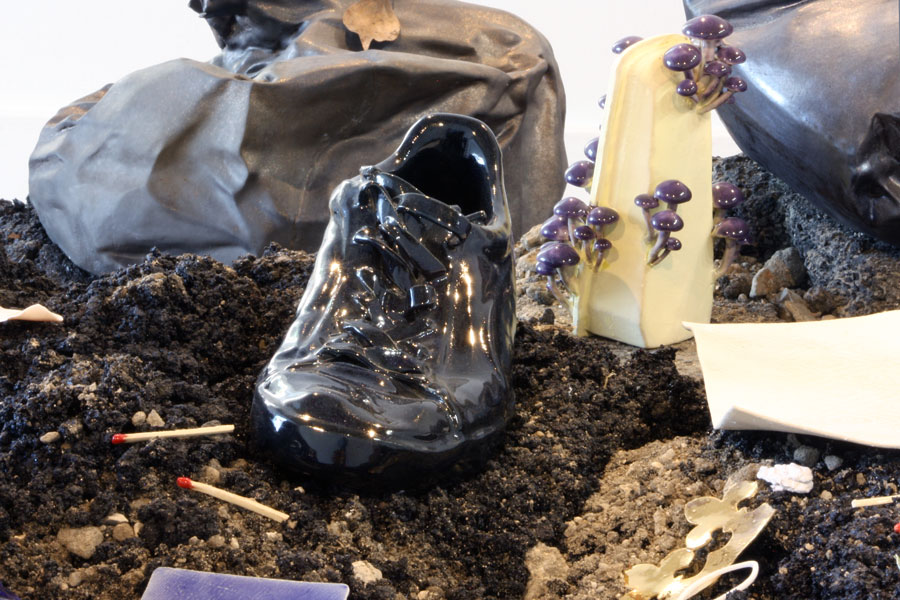
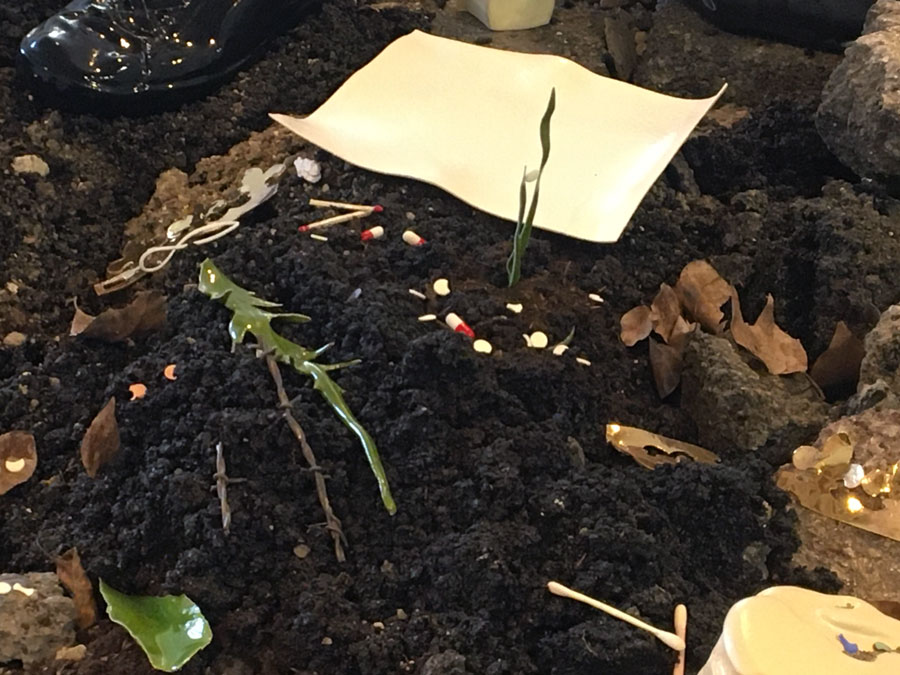
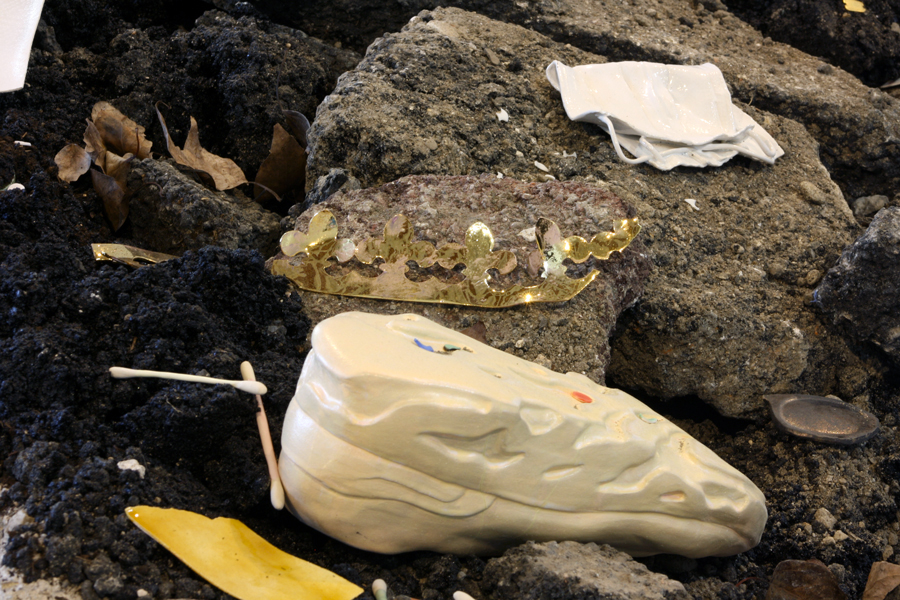
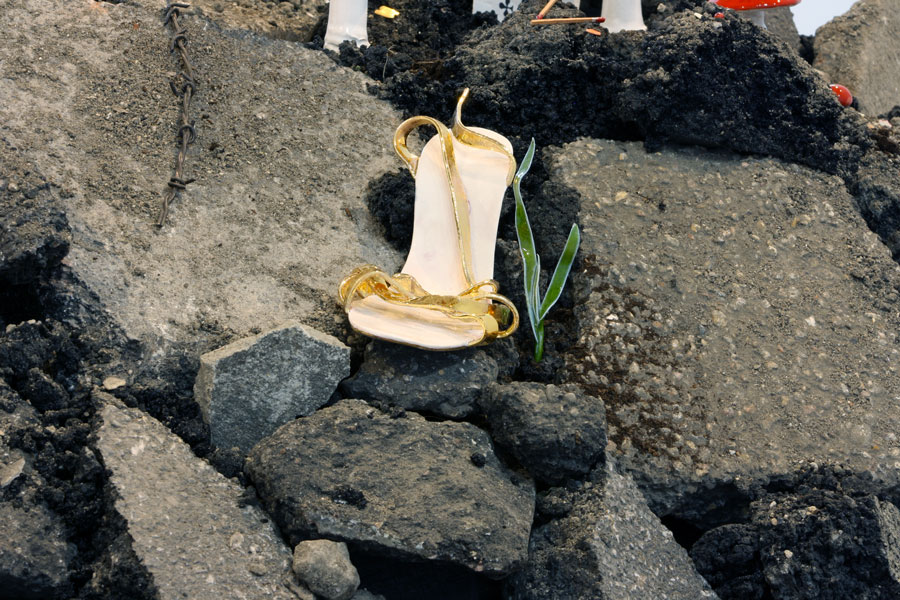
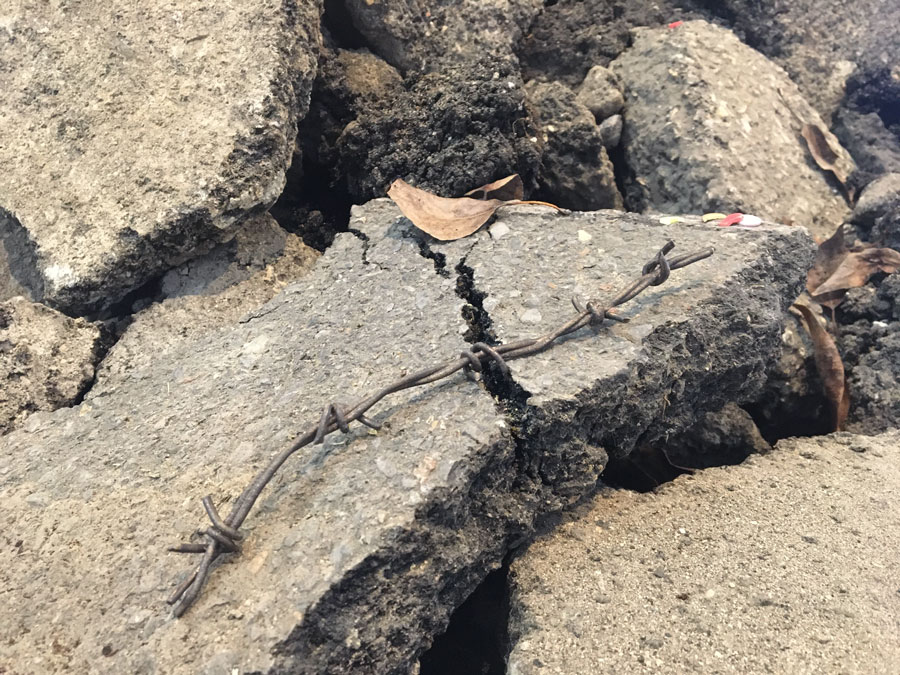

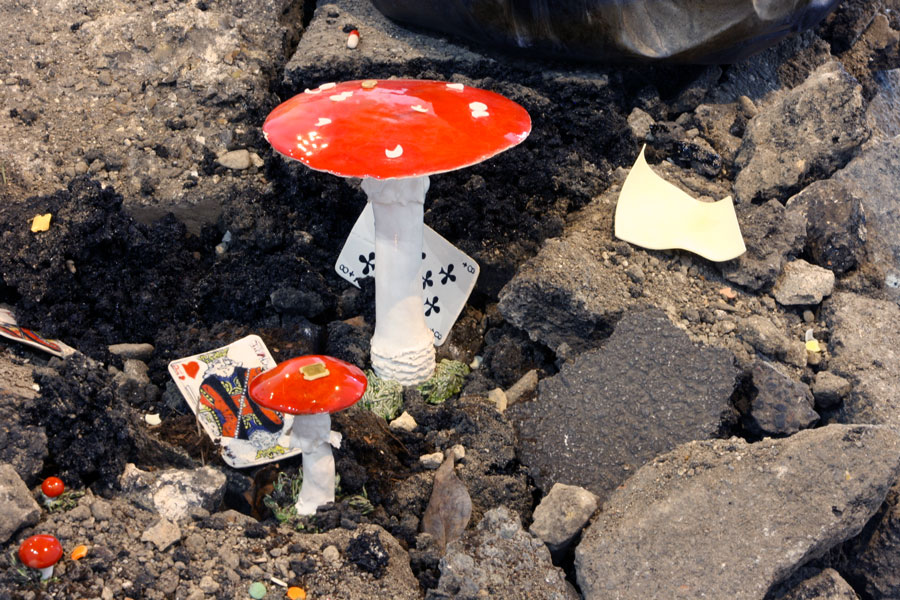
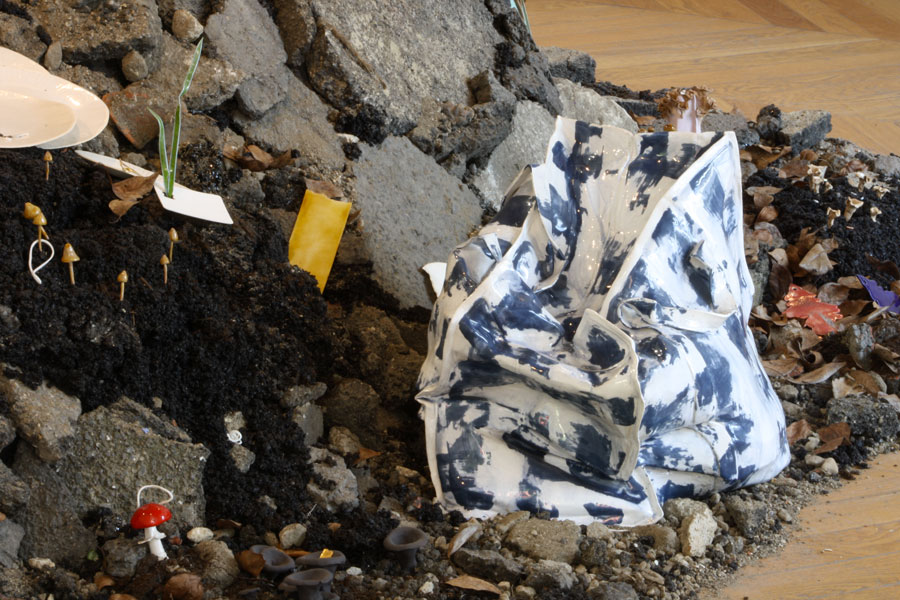

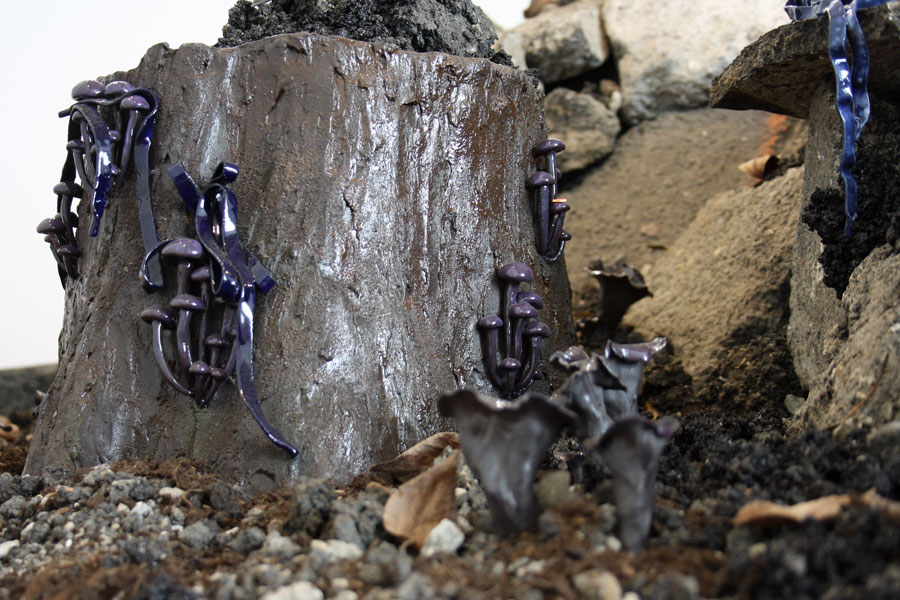
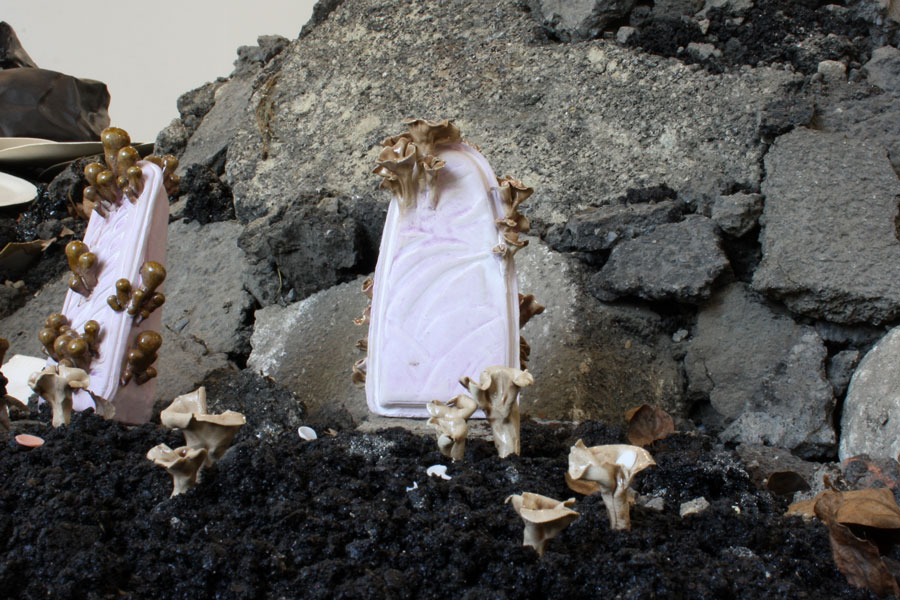
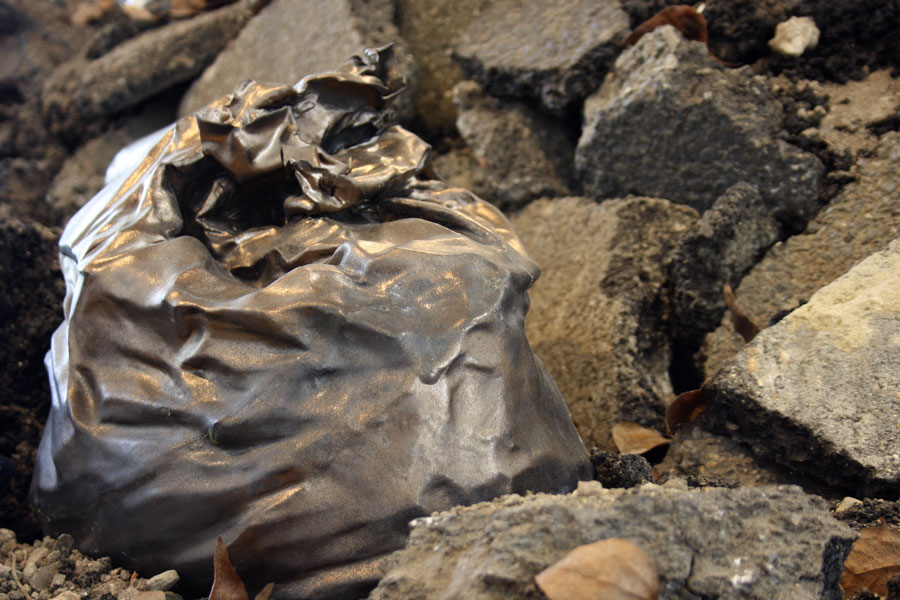
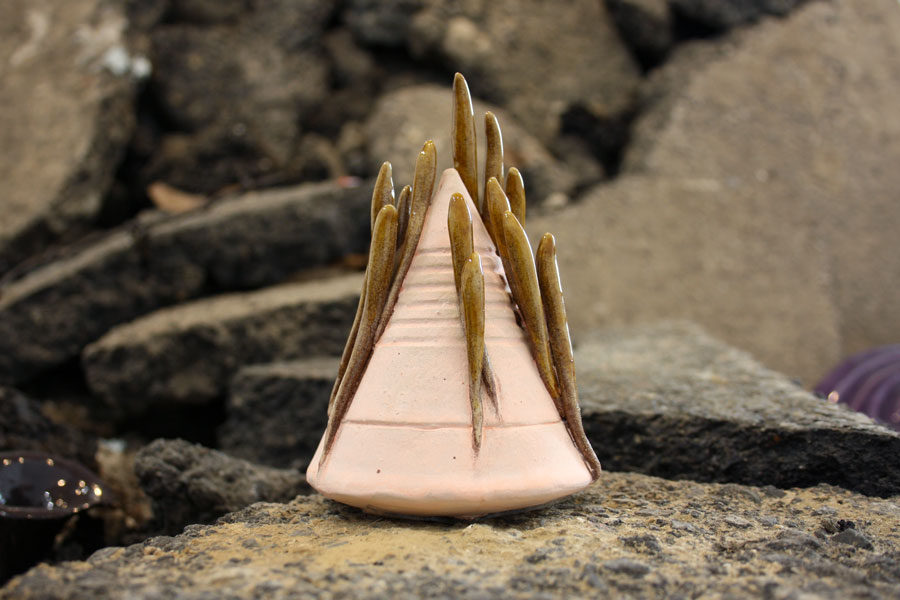
Thomas Maillet Mezeray
The undergrowth is that singular plant space, intermediate between the ground and the canopy, where three forest strata come together: the shrub stratum, the muscular stratum and the herbaceous stratum. A crucible of biodiversity, it is the antithesis of the concrete homogeneity of the city. Yet it is this strange association that Aurélie Slonina explores in this installation presented on the occasion of the “Urbanité verte” exhibition at the Centre Tignous d'Art contemporain. The herbaceous layer has been replaced by a layer of bitumen. The shrubs have been replaced by heterogeneous objects, among which we recognize several terms from the artist's language: the air freshener in Fraîcheur marine (2009) and Fraîcheur végétale (2012); the shoes in Sunrise (2015), in particular the sneakers found as compositional elements in Green touch (2014) and Hors-sol (2020). Significant artifacts: aren't they witnesses to a society that distances man from nature - a nature considered dirty and whose odors should be masked? As a counterpoint, mushrooms represent the only form of life. Organisms that are still a mystery to the natural sciences, neither animals nor plants, they thwart the botanical taxons that Aurélie Slonina likes to subvert. So it's no coincidence that they feature repeatedly in his compositions: Hepatica fistulina #1 (2010), Hepatica fistulina #2 (2010), Big bang (2012). Compositions in which they are endowed with an ambiguous symbolic value: parasites feeding on their host, they also fulfill a crucial ecological function by degrading matter. In Sous-bois, this latter value seems more accentuated. A force for regeneration, they swarm over synthetic waste, giving rise to the hope of reclaiming nature. The central pile of gravel adds to the equivocation. Is it a tumulus, a funereal tribute to a nature smothered under tarmac? Or is it the sign of vegetation about to break through the asphalt and reclaim its rights? The presence of objects that have become garbage raises the question of time. This theme is not new to the artist's work: La Dérive des météores (2020) expressed “a disturbing futuristic vision”. With Sous-bois, it's a certain relationship with the past, perhaps a nostalgic one, that shines through. Are the gold-strapped pumps and sandals reminders of the festive evenings of a youth long gone? And the piece of crown, a fragment of childhood resurfacing? Whatever the questions raised and interpretations sketched out, the hybridity of this installation makes it a matrix of ideas questioning our relationship with ourselves and our environment. |
|---|